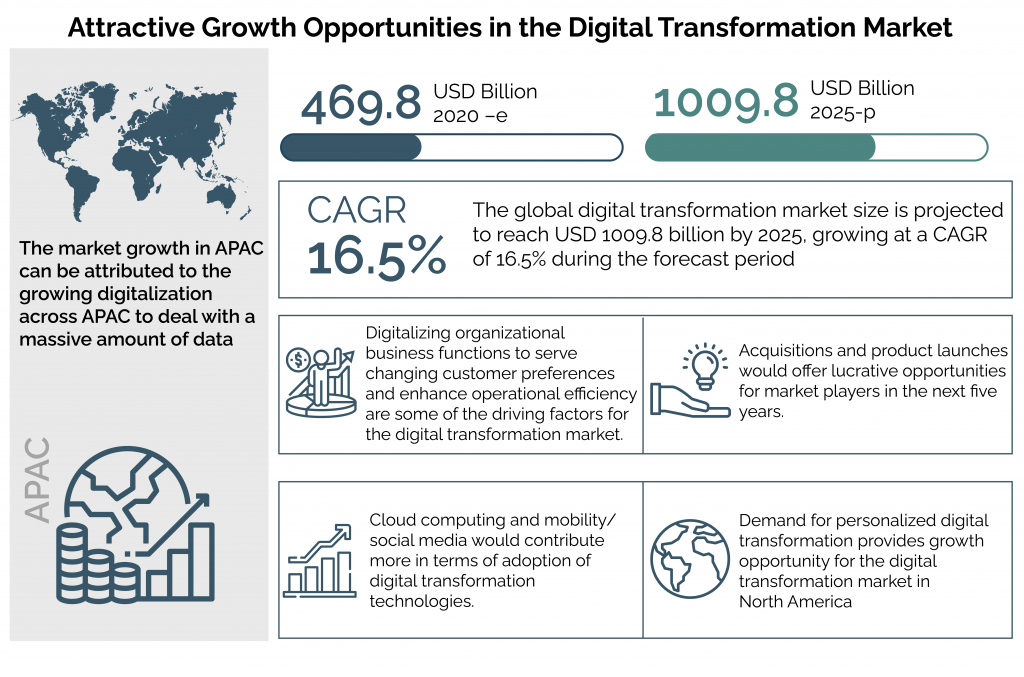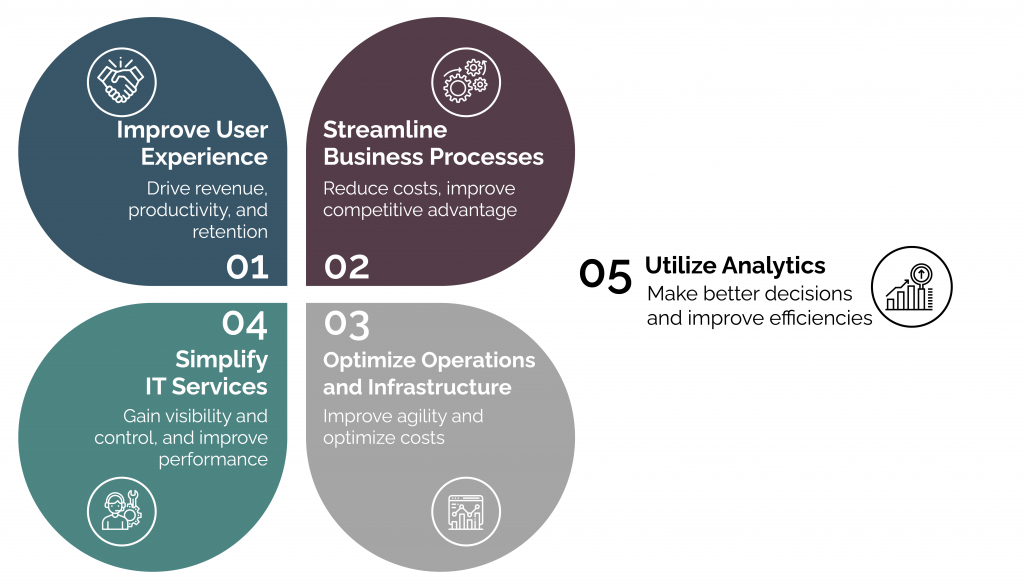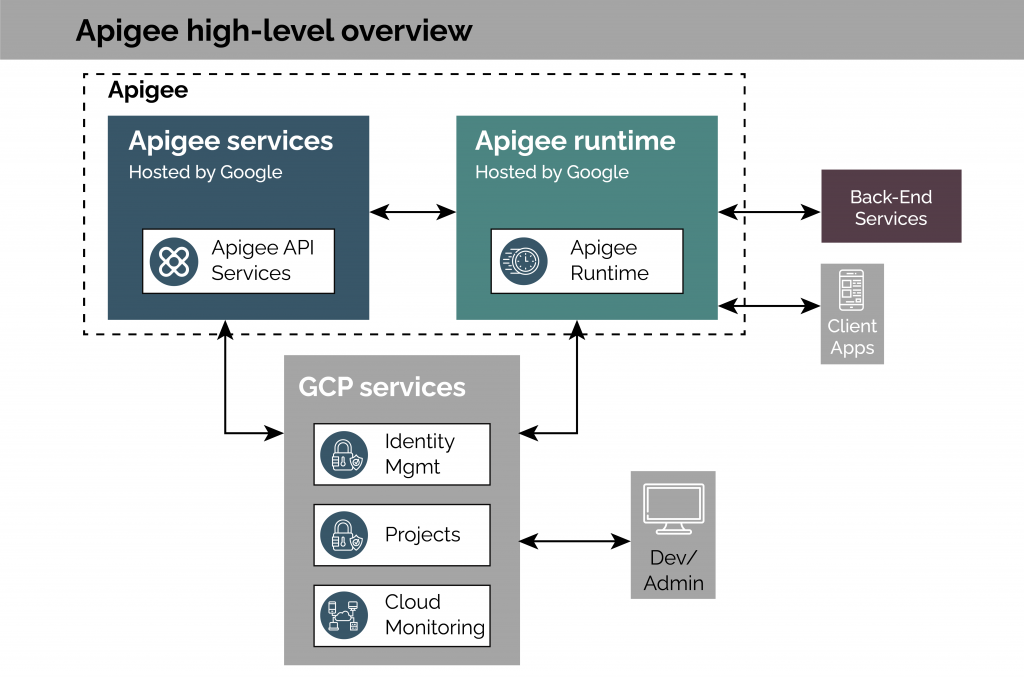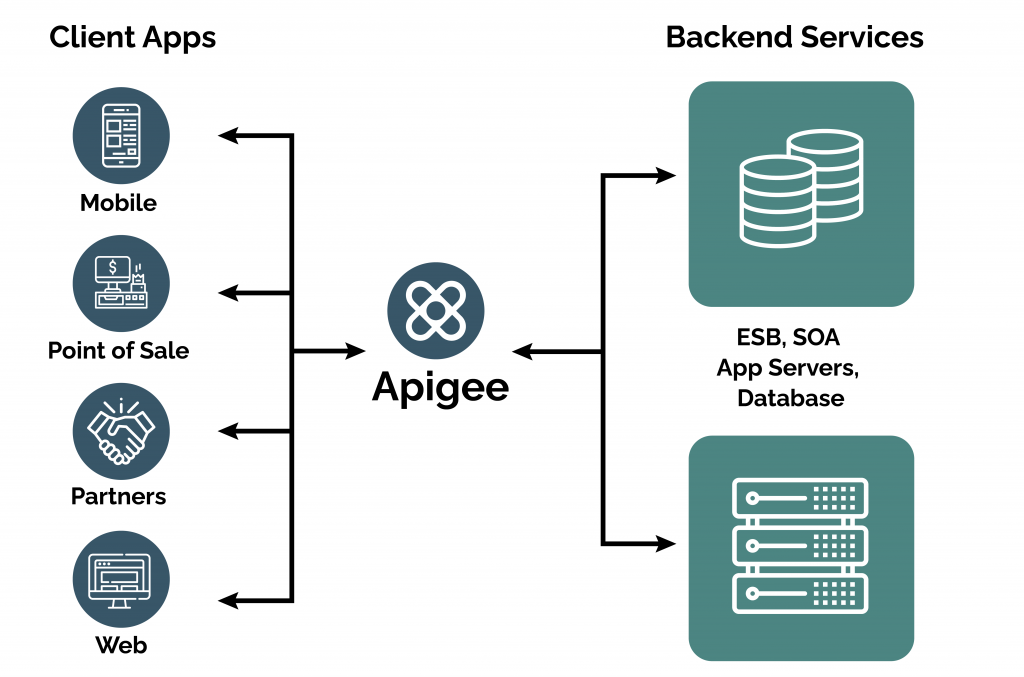Advancements in technology and the burgeoning number of connected devices mandate every business to become digitally enabled. A crucial ingredient to navigate uncertainty and deliver value in a competitive digital economy is Digital Transformation.
Defining Digital Transformation
Digital transformation is the key strategic initiative businesses take to engage and augment digital technologies for traditional and non-digital business processes and services. This process may include creating new processes to meet the evolving market demand and propel bottom lines. Digital transformation completely alters the way businesses operate and manage, with a primary focus on customer-centric value delivery.
What does Digital Transformation Entail?
- Digital transformation can include digital optimization, IT Modernization, and inventive digital business modeling.
- Analyzing customer needs, mapping emerging technologies to requirements, and leveraging them for elevated user experiences.
- Business evolution through new experimentation, techniques, and approaches to common issues.
- Continual adaptation to a dynamic environment and change management.
- Cloud migrations, API implementations, legacy app modernization, on-demand training, leveraging artificial intelligence, incorporating automation, and more.
- Redefining leadership roles for strategic and change planning and digital-business disruption. This will prevent Siloed thinking and digital bolt-on strategies to give way to a more holistic approach.
According to Bain & Company, only 8% of global companies have achieved their business outcome targets from their digital technology investments. Leaders need to invest in digital transformation instead of just running their business with technology.
 Benefits of Digital Transformation
Benefits of Digital Transformation
 3 Common Challenges of Digital Transformation
3 Common Challenges of Digital Transformation
Most digital transformation issues can be associated with one of the following: people, communication, and measurement.
People: are at the core of any digital transformation initiative. Resistance to the cultural change caused by digitalization is a natural human instinct. 46% of CIOs say human adoption to culture change is their most significant barrier.
Poor Communication: Leaders often don’t communicate about their digital transformation plans and expectations to their teams. Specific and actionable guidance is often overlooked before, during, and after digital transformation.
Lack of Measurement: The absence of newer and context-specific KPIs and metrics and platforms to measure them leads to assumptions and failures.
Connecting the Digital Transformation Dots with APIs
Businesses need an outside-in viewpoint of customer experiences and expectations to accelerate and close gaps digitally. Platforms like Apigee help develop and manage APIs using interactive & self-service tools like Apigee Compass. These interactive and self-managed tools help gauge an organization’s digital maturity and curate a path to digital success. Apigee defines two cornerstone principles of Digital Transformation.
First Principle: Modern business must not stop adopting a mobile strategy or using cloud computing to create savings efficiencies. They must embrace a shift in the demand and supply nature.
This principle requires changing the traditional supplier-distributor and value chains. Strategies must go beyond focusing on the physical goods and services pipeline with lesser channels & customer interactions. Businesses must scale infinitely using virtual assets in new technological avenues at no marginal cost. This shall distribute value creation across ecosystems of customers, enterprises, vendors, and third parties. The key technologies include:
- Omnichannel digital platforms
- Packaged software and services using SaaS
- APIs that connect data, systems, software applications, or mixed hardware-software intermediaries using HTTPS-based requests and responses.
Second Principle: Digital Transformation is shaped by a new shift in operating models that operationalize APIs and influence IT investments through technology ecosystem strategies.
APIs offer strategic levers to break silos and fuel the digital transformation initiative using IT enablers. Apigee provides a proxy layer for front-end services and an abstraction for backend APIs. It has features like security, rate management, quotas, and analytics, etc.
Apigee High-level Architecture
 The two primary components include:
The two primary components include:
- Apigee services: APIs used to create, manage, and deploy the API proxies.
- Apigee runtime: A Kubernetes-cluster based collection of containerized runtime services in Google. All API traffic is processed using these services.
- Additionally, GCP services support IAM, logging, metrics, analytics, and project management. In comparison, backend services provide runtime data access for your API proxies.
Managing Services with Apigee
Apigee offers secure service access with a well-defined, consistent, and service-agnostic API to:
- Help app developers seamlessly consume your services.
- Enable backend service implementation change without impacting the public API.
- Leverage analytics, developer portals, and other built-in features.
 10 Foundational Tenets of API-centric Digital Transformation
10 Foundational Tenets of API-centric Digital Transformation
- Platform – Agile platforms repackage the software for new use cases, interactions, and digital experiences. APIs converge new services with the core system to deliver operational flexibility and data efficiency.
- RESTful APIs – These offer flexible and intuitive programming and multi-platform/service integration. You can monetize APIs through custom packaging.
- Outside-in Approach – Customer and partner experience need to be measured using analytics. This helps transform APIs into exceptional digital experiences.
- Ecosystem – This includes digital assets (internal and external), services, developers, partners, customers, and other enablers. This enables distributed demand generation, non-linear growth, and value creation across lucrative digital networks.
- Leadership – Top-to-bottom commitment helps achieve the necessary cultural alignment. APIs can be incentivized to create frictionless delivery cycles and propel bottom lines.
- Funding – API programs can blend with agile funding models, development cycles, and governance processes. Direct API funding can improve data utilization and process iteration without the need for excessive investments.
- Metrics – Enterprises must embrace API-based metrics like consumption rate, transactions-per-call, etc., that go beyond ROI, transaction volumes, and pricing. This helps overcome narrow opportunity windows and fragmented customer segments.
- Software Development Lifecycle (SDLC) – An API-first and agile-centric approach in a test-driven environment offers speed, innovation, and cost savings. This helps implement changes on-demand based on the ever-changing customer preferences. Automation should be pivotal to this approach where funding and measuring project success through intelligence and accurate forecasting tools is the top priority.
- Talent – Talent is key to the API digital value chain. Strong technical API-programming talent (developers, architects, documentation experts) shapes a company’s digital competency. Agile governance, funding, training, developer communities, portals, knowledge-sharing, automation, and DevOps promote talent improvement and retention.
- Self-Service – This involves delivering value in developer-driven value chains using developer portals, API catalogs, API keys and sample codes, testing tools, interactive API help content, and digital communities.
Concluding Thoughts
Businesses can rely on APIs to scale with speed and be more responsive to demands. Regardless of your digital transformation roadmap, positioning API as a strategic asset for digital acceleration is crucial in any enterprise landscape.
Connect with Radiant to learn more!


